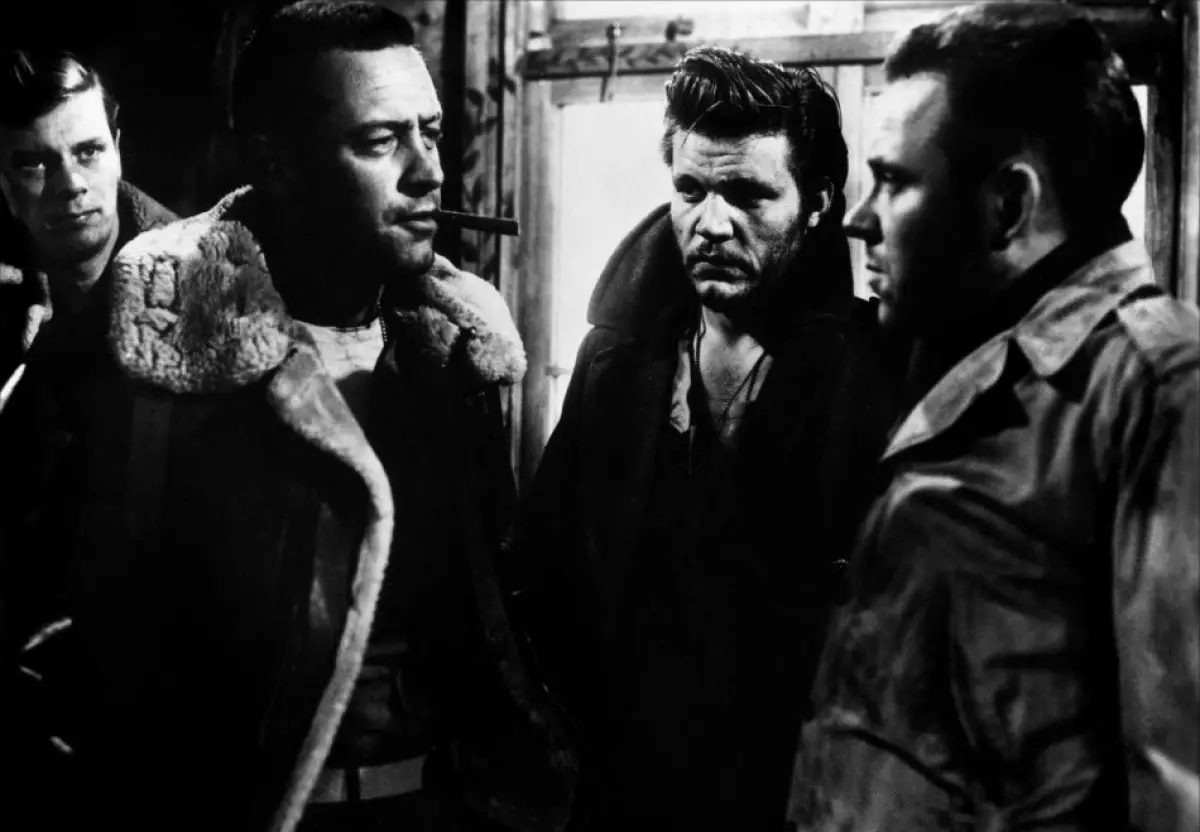
Stalag 17 finds a way to mix comedy and drama to give audiences one of the best films to take place in a POW camp during World War II.
The film is set at a Nazi prison camp in Austria while the Battle of the Bulge is taking place in 1944. Clarence Harvey “Cookie” Cook (Gil Stratton) provides the narration for the POW camp-set film. Manfredi and Johnson are shot during an attempt to escape. All eyes fall on Sergeant J.J. Sefton (William Holden), ever the cynic who believes any escape attempt is no good. He’s always trying to barter with the Germans in charge. If it’s not one thing, it’s another.
There’s also something of a rivalry between Sefton and Lieutenant James Schuyler Dunbar (Don Taylor. The two come from very different backgrounds. While many of the POWs believe Sefton to be a spy, he tries to find who the real spy is. Some of the plot deals with preventing the SS from taking Dunbar to Berlin for destroying a train.
Everyone in camp does what they can to get through the day and defy the commander-in-charge, Colonel von Scherbach (Otto Preminger). It’s interesting to see Preminger, a Jewish filmmaker and actor himself, cast in the role. Preminger came to the states in the mid-1930s before things got bad for European Jews. Meanwhile, Sig Ruman is appears in the film as Sergeant Johann Sebastian Schulz.
“When Johnny Comes Marching Home” is certainly one of the more upbeat moments of the film. With all of them marching around the barracks and all. Meanwhile, there’s a dance scene with Harry (Harvey Lembeck) and Stosh (Robert Strauss) dancing together. You just know that this didn’t play well with the Production Code. The Production Code wouldn’t have any of it–Joseph Breen’s own homophobia was showing in correspondence to Paramount executives. This is around the same point in his career when Wilder starts to focus mostly on nothing but comedies. He’s not the type of filmmaker to hold back by any means. If it meant going to war with the censors, so be it. And again, this is a film that takes place at a POW camp!
Billy Wilder needed a safe script to turn into a film. Ace in the Hole, while inspired by real events, didn’t do so well at the box office. It wouldn’t see any kind of real acclaim until the 1980s. Wilder turned to Stalag 17 after seeing the hit Broadway play. In exploring Wilder’s filmography, it’s amazing to see how many films were based on plays or books.
William Holden won the Oscar for Best Actor in a Leading Role. Mind you, the Oscar came in the same year as From Here to Eternity. One way of looking at this is that Holden won because he lost for Sunset Boulevard. The Oscars have a way of correcting themselves for wrongdoing in the past even if it means another deserving individual doesn’t win. Though in another universe, it could have been different. Charlton Heston was the first choice for the film and declined. Kirk Douglas, who worked with Billy Wilder on Ace in the Hole, was the next choice and it’s well known that he regretted turning down the role.
There were some 93,000 Americans captured by Germany and placed in Prisoner-Of-War camps. Playwrights Donald Bevan and Edmund Trzcinski were both placed in a POW camp. The play, upon which the film is based, is based on their experiences. When it came to adapting plays for the screen, Billy Wilder usually kept the plot intact but changed up most of the dialogue. This is exactly what happened with Stalag 17 to no surprise.
Stalag 17 is too much of a comedy for a WWII-set film but sometimes, you just have to turn to humor in order to survive.
DIRECTOR: Billy Wilder
SCREENWRITERS: Billy Wilder and Edwin Blum
CAST: William Holden, Don Taylor, Otto Preminger, Robert Strauss, Harvey Lembeck, Peter Graves, Neville Brand, Richard Erdman, Sig Ruman





